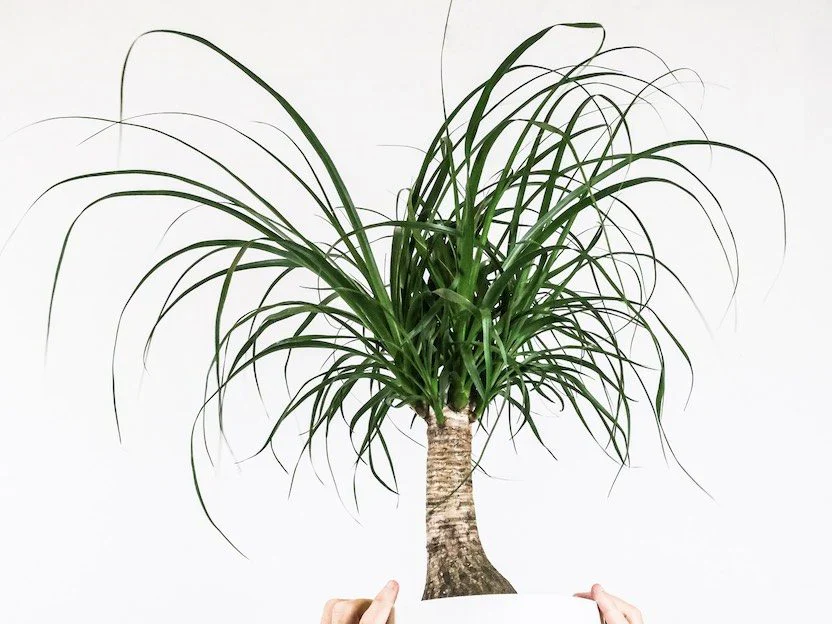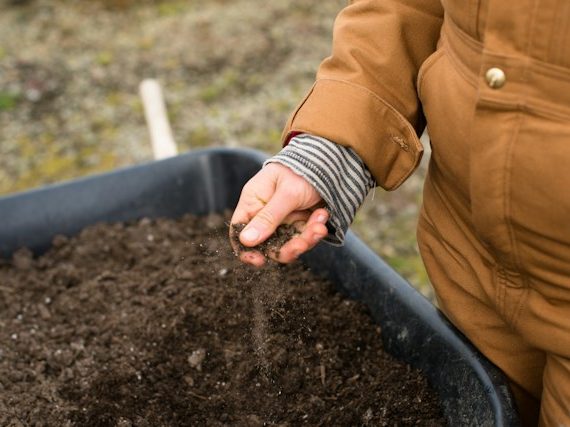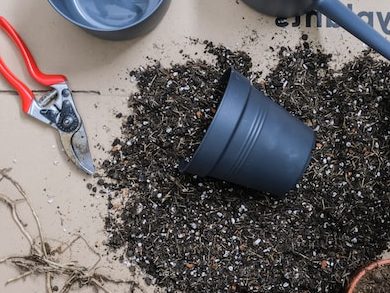
Loved for being low maintenance plants that bring a bit of the tropics indoors, the Ponytail Palm is a great for both novice and experienced plant parents. It is often forgotten though that they are succulents so they aren’t adaptable to every environment and if things aren’t right, these Palms can start to develop brown leaves. Below, we will go through each of the main reasons why Ponytail Palms develop brown leaves and leaf tips. We will also cover how to treat the issue and stop it from causing any more brown foliage.
Underwatering can cause brown leaf tips on Ponytail Palms
Ponytail Palms can be forgiving for the odd time where you forget to water, but if they don’t receive any moisture for several weeks then they will start to develop brown leaves. With Ponytail Palms, this will most commonly start from the tips of the leaves and work its way throughout the leaf as the issue progresses.
Before you start pouring loads of water over your plant, you need to make sure that this is really the cause of the brown leaves on your Ponytail Palm. The best thing to do is check the moisture levels in the soil by removing the plant from its pot. If the soil is dry and feels quite sandy to touch, and the roots look a little crispy and shrivelled, then underwatering is likely the cause.
It’s important that you treat the issue of overwatering properly as otherwise, you may cause more problems than just the brown leaves you started with.
- Give your Ponytail Palm a soak.
Fill up a container with fresh temperate water and place your Ponytail Palm in there for about 10-15 minutes. Make sure the water is temperature as really hot or cold water can halm your Palm. This bathing method allows the water to soak into the potting mix but your Palm will only take up as much as it needs. Often when watering really dry soil, it flows right through and out the bottom of the pot which doesn’t help solve the issue so bathing helps soak the potting mix.
- Slowly reintroduce watering.
Sudden changes in the environment can be quite stressful for plants and if the potting mix goes from really dry to super soggy quickly, it can cause your plant to go into shock (this is why we recommend only soaking for a short time). For the next week or so, slowly reintroduce watering by giving your Ponytail Palm a little every day before returning to a more normal schedule.
- Adjust your watering schedule.
If you had simply forgotten to water your Ponytail Palm and that’s why the brown leaves appeared, the fix is easy – just make sure to remember how often to water your Palm. However, if you did stick to a watering schedule, it suggests that it wasn’t enough. You want to make sure that you are either watering more frequently than you did previously or that you give your Ponytail Palm a little bit more water each time you do and this will help to avoid more brown leaves.
Make sure you are keeping an eye on when the potting mix is dry so you know when it’s time to water your Ponytail Palm. Using a
moisture meter is a great way to avoid any more brown leaves caused by a lack of water in future – they are every plant parents best-kept secret.
Brown leaves can be caused by low light
Ponytail Palms are one of the only houseplants that really like bright sunshine! Whilst they can adapt to lower light levels, you may experience some issues such as leggy or stagnant growth and a few brown leaves. This is simply because your Ponytail Palm isn’t getting enough light to photosynthesise properly.
If this is happening to your Ponytail Palm, make sure to move it to a spot that is getting enough sunlight. If this is occurring during winter, or there is no brighter place for your Palm to go, then supplementing light through LED grow bulbs is the best way to go.
Too much fertiliser could also be the problem
Another cause of brown Ponytail Palm leaves is too much fertiliser/ plant food. We recommend fertilising your Ponytail Palm with
a water-soluble feed, making sure that you dilute it more than it says on the bottle. Each plant is unique and there are so many factors that determine how much feed your plant needs so there can never be one amount that suits all plants.
Ponytail Palms don’t need regular feeding, once or twice a year (during the growth months) is all your Palm needs. You also shouldn’t be feeding your Palm at all during autumn and winter. If you are fertilising more than this, or not diluting the feed enough, this can cause fertiliser burn which shows up as brown leaf tips or edges.
To solve the issue, flush out the soil of all fertiliser and hold off using any feed with your Ponytail Palm for an entire year. The great thing about Ponytail Palms is that you don’t really have to feed them at all and you will still be rewarded with luscious new leaves.
Those are the three main reasons why Ponytail Palms develop brown leaves or brown leaf tips. As they are quite forgiving plants, by the time it has caused brown leaves it does tend to mean that the issue has been going on for a while which can make solving the issue a little tricker. However, as long as you act as soon as you spot the issue then you should still have a good chance at getting your Ponytail Palm back to full health and preventing any more brown leaves.
To learn more about how to properly care for your plant, check out our
Ponytail Palm care guide.
 Loved for being low maintenance plants that bring a bit of the tropics indoors, the Ponytail Palm is a great for both novice and experienced plant parents. It is often forgotten though that they are succulents so they aren’t adaptable to every environment and if things aren’t right, these Palms can start to develop brown leaves. Below, we will go through each of the main reasons why Ponytail Palms develop brown leaves and leaf tips. We will also cover how to treat the issue and stop it from causing any more brown foliage.
Loved for being low maintenance plants that bring a bit of the tropics indoors, the Ponytail Palm is a great for both novice and experienced plant parents. It is often forgotten though that they are succulents so they aren’t adaptable to every environment and if things aren’t right, these Palms can start to develop brown leaves. Below, we will go through each of the main reasons why Ponytail Palms develop brown leaves and leaf tips. We will also cover how to treat the issue and stop it from causing any more brown foliage.















